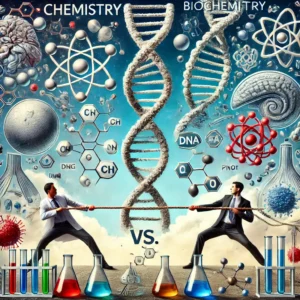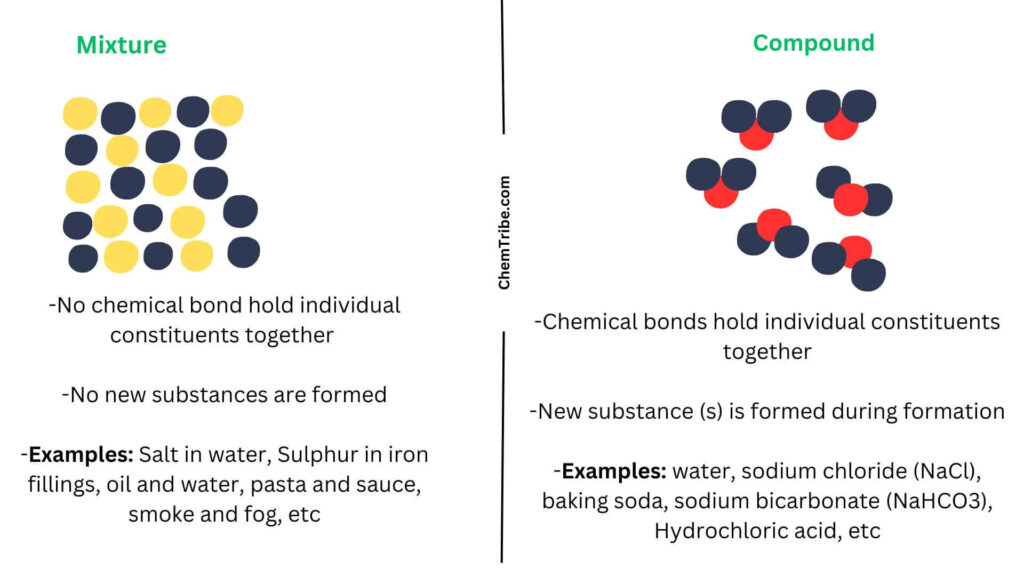
The oxidation number (or oxidation state) is used to describe the positive or negative nature of an atom. When an atom loses electrons, it acquires a positive oxidation number. Conversely, when an atom gains electrons, it acquires a negative oxidation number.
From time to time, you may be required to calculate the oxidation number of a specific element or atom in a compound. Here are some useful tricks to help you solve such questions:
Trick 1: Know the Oxidation Number Rules
When calculating oxidation numbers, the following rules are essential:
- Free Elements: An element in its free state (i.e., uncombined with another element) has an oxidation number of zero. This applies to pure metals such as sodium (Na) and potassium (K), as well as diatomic molecules like oxygen (O₂), chlorine (Cl₂), and nitrogen (N₂), where all atoms have an oxidation number of zero.
- Simple Ions: For monatomic ions (ions consisting of a single atom), the oxidation number is equal to the charge on the ion.
- Example:
- Na⁺ → Oxidation number = +1
- Cl⁻ → Oxidation number = −1
- Mg²⁺ → Oxidation number = +2
- O²⁻ → Oxidation number = −2
- Example:
- Compounds: In a neutral compound, the sum of the oxidation numbers of all constituent atoms is always zero.
- Example: In NaCl,
- Oxidation number of Na + Oxidation number of Cl = 0
- Since Na⁺ has an oxidation number of +1, Cl⁻ must have an oxidation number of −1 to balance the equation.
- Example: In NaCl,
Trick 2: Common Oxidation States and Their Exceptions
Understanding the typical oxidation states of elements can make oxidation number calculations much easier. Here are some key oxidation states along with their exceptions:
| Element | Oxidation State | Exceptions |
| Group 1 metals (e.g., Li, Na, K) | Always +1 | None |
| Group 2 metals (e.g., Be, Mg, Ca) | Always +2 | None |
| Fluorine (F) | Always −1 | None |
| Oxygen (O) | Mostly −2 | Peroxides (−1) and OF₂ (+2) |
| Hydrogen (H) | Mostly +1 | Metal hydrides (e.g., NaH, −1) |
| Chlorine (Cl) | Mostly −1 | Compounds with O or F (e.g., ClO₄⁻, where Cl is +7) |
Trick 3: Oxidation States in Binary Metal Compounds
In binary metal compounds (compounds consisting of a metal and a nonmetal or another metal), oxidation states generally follow predictable patterns:
- Group 17 elements (Halogens) → −1
- Group 16 elements (Oxygen family) → −2
- Group 13 elements (Boron family) → −3
A binary metal compound consists of two elements, where one is a metal and the other is either a nonmetal or another metal. These compounds typically follow the general formula MₓYᵧ, where M represents a metal and Y represents a nonmetal or another metal.
Trick 4: Assign Oxidation States Based on Electronegativity
In a compound, the more electronegative atom takes a negative oxidation state, while the less electronegative atom takes a positive oxidation state.
Examples:
- HCl → Chlorine (Cl) is more electronegative than hydrogen (H), so:
- Cl = −1, H = +1
- CO₂ → Oxygen (O) is more electronegative than carbon (C), so:
- O = −2 (each oxygen)
- Since the total charge must be 0, carbon must be +4 to balance:
- C = +4, O₂ = −4 (−2 × 2)
- NH₃ (Ammonia) → Nitrogen (N) is more electronegative than hydrogen (H), so:
- H = +1 (each hydrogen)
- To balance, nitrogen must be −3:
- N = −3, H₃ = +3 (+1 × 3)
This rule is particularly useful when dealing with unfamiliar compounds, as it helps determine oxidation states quickly.
Trick 5: Understand the Oxidation States in Radicals (Polyatomic Ions)
A radical (or polyatomic ion) is a group of atoms that behave as a single entity during chemical reactions. These ions commonly appear in various compounds and follow specific oxidation rules.
- Most radicals are negatively charged, behaving like simple anions.
- The ammonium ion (NH₄⁺) is an exception, as it is positively charged.
- Each radical has a single valency, equal to the numerical value of its charge.
- Each atom in a radical has its own oxidation number, and the sum of oxidation numbers within the radical equals the overall charge of the ion.
Example Calculation:
For the sulfate radical (SO₄²⁻):
- Oxygen (O) usually has an oxidation number of −2.
- Let sulfur (S) have an oxidation number of x.
- The total charge of SO₄²⁻ is −2, so: x+4(−2)=−2x + 4(-2) = -2x+4(−2)=−2 x−8=−2x – 8 = -2x−8=−2 x=+6x = +6x=+6
Thus, sulfur (S) = +6 and oxygen (O) = −2.
Common Radicals and Their Oxidation States
| Charge = −1 | Charge = −2 | Charge = −3 |
| Hypochlorite (ClO⁻) | Carbonate (CO₃²⁻) | Phosphate (PO₄³⁻) |
| Chlorite (ClO₂⁻) | Peroxide (O₂²⁻) | |
| Chlorate (ClO₃⁻) | Chromate (CrO₄²⁻) | |
| Perchlorate (ClO₄⁻) | Dichromate (Cr₂O₇²⁻) | |
| Nitrite (NO₂⁻) | Sulfite (SO₃²⁻) | |
| Nitrate (NO₃⁻) | Sulfate (SO₄²⁻) | |
| Hydroxide (OH⁻) | ||
| Bicarbonate (HCO₃⁻) | ||
| Permanganate (MnO₄⁻) | ||
| Cyanide (CN⁻) | ||
| Thiocyanate (SCN⁻) |
Trick 6: Ignore Neutral Molecules When Calculating Oxidation States in Complex Compounds
When calculating oxidation states in a complex compound, you can ignore neutral molecules like H₂O (water) or NH₃ (ammonia) because their oxidation state is 0.
Example 1: Oxidation State of Cr in [Cr(H₂O)₆]³⁺
- H₂O is neutral, so its oxidation state = 0
- Let Cr have an oxidation state of x
- The overall charge of the complex is +3, so: x+6(0)=+3x + 6(0) = +3x+6(0)=+3 x=+3x = +3x=+3 Oxidation state of Cr = +3
Example 2: Oxidation State of Co in [Co(NH₃)₅CO₃]Br
- Br (a halogen) has an oxidation state of −1
- NH₃ is neutral (oxidation state = 0)
- CO₃²⁻ (carbonate ion) has an oxidation state of −2
- Let Co have an oxidation state of x
Now, solve for x:
x+5(0)+(−2)+(−1)=0x + 5(0) + (-2) + (-1) = 0x+5(0)+(−2)+(−1)=0 x−3=0x – 3 = 0x−3=0 x=+3x = +3x=+3
Oxidation state of Co = +3
By ignoring neutral molecules in oxidation state calculations, you can simplify complex problems and solve them efficiently.



